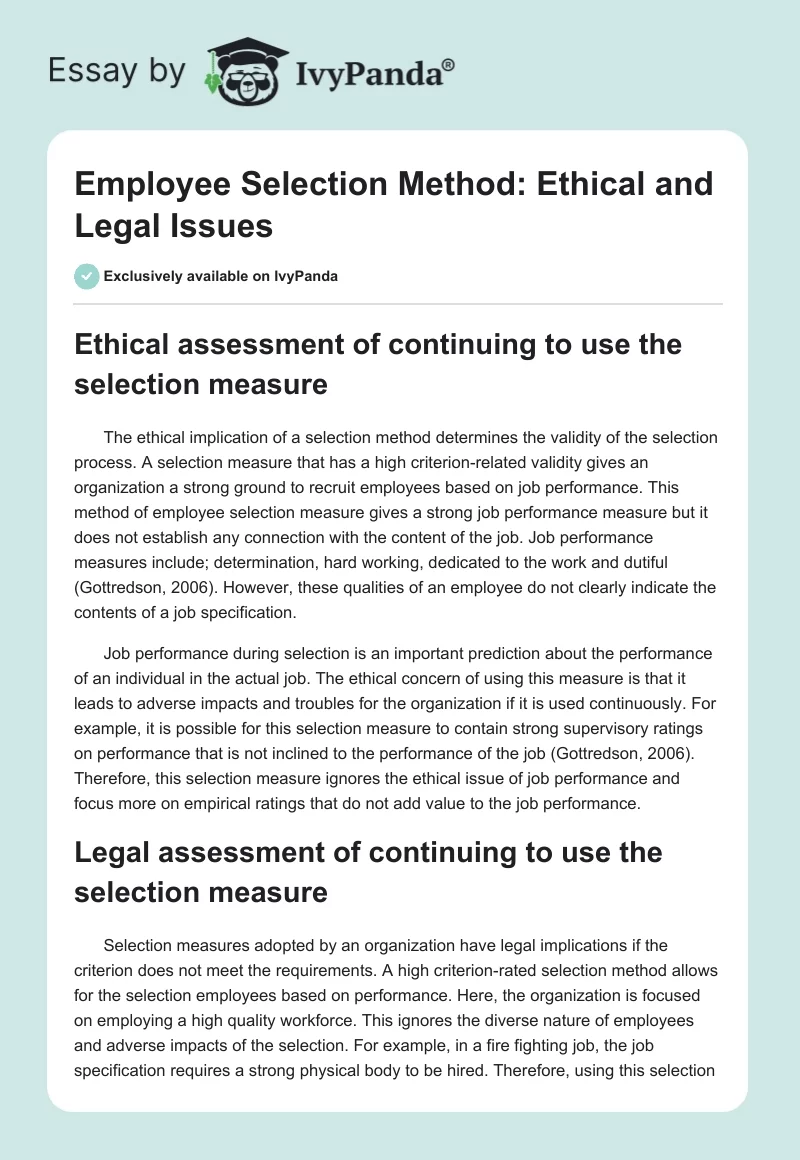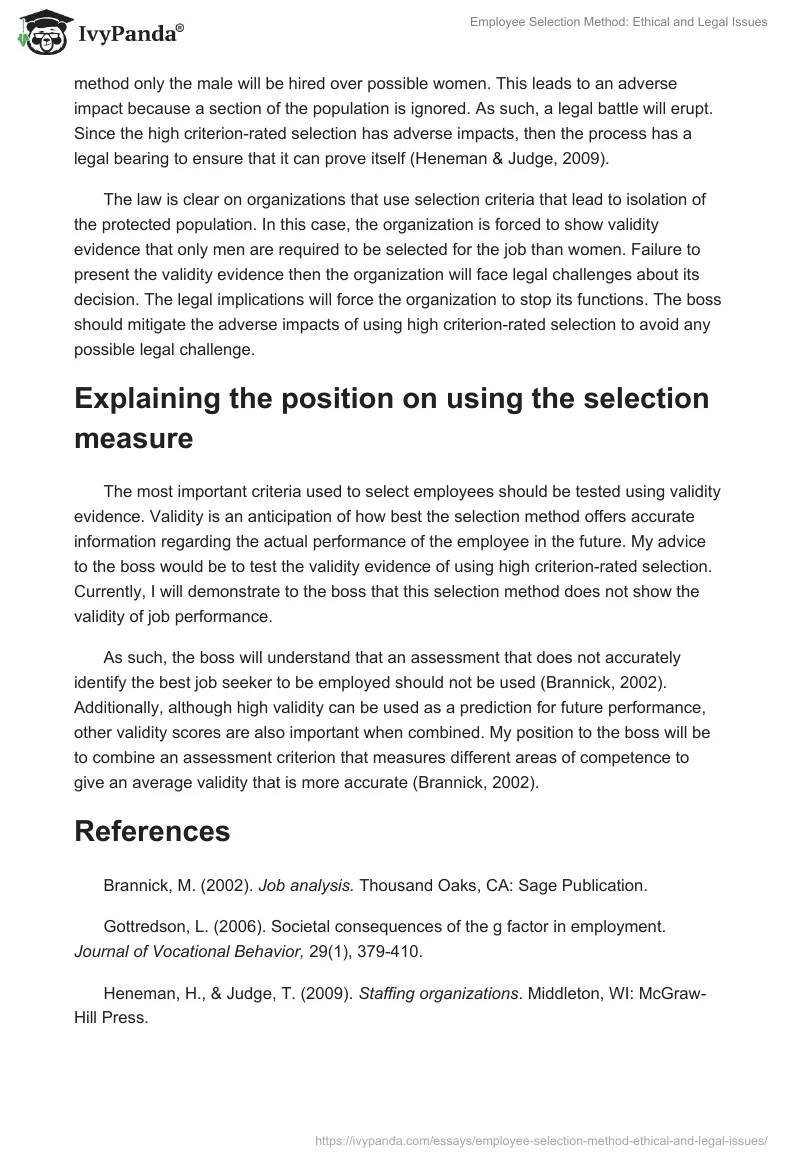Ethical assessment of continuing to use the selection measure
The ethical implication of a selection method determines the validity of the selection process. A selection measure that has a high criterion-related validity gives an organization a strong ground to recruit employees based on job performance. This method of employee selection measure gives a strong job performance measure but it does not establish any connection with the content of the job. Job performance measures include; determination, hard working, dedicated to the work and dutiful (Gottredson, 2006). However, these qualities of an employee do not clearly indicate the contents of a job specification.
Job performance during selection is an important prediction about the performance of an individual in the actual job. The ethical concern of using this measure is that it leads to adverse impacts and troubles for the organization if it is used continuously. For example, it is possible for this selection measure to contain strong supervisory ratings on performance that is not inclined to the performance of the job (Gottredson, 2006). Therefore, this selection measure ignores the ethical issue of job performance and focus more on empirical ratings that do not add value to the job performance.
Legal assessment of continuing to use the selection measure
Selection measures adopted by an organization have legal implications if the criterion does not meet the requirements. A high criterion-rated selection method allows for the selection employees based on performance. Here, the organization is focused on employing a high quality workforce. This ignores the diverse nature of employees and adverse impacts of the selection. For example, in a fire fighting job, the job specification requires a strong physical body to be hired. Therefore, using this selection method only the male will be hired over possible women. This leads to an adverse impact because a section of the population is ignored. As such, a legal battle will erupt. Since the high criterion-rated selection has adverse impacts, then the process has a legal bearing to ensure that it can prove itself (Heneman & Judge, 2009).
The law is clear on organizations that use selection criteria that lead to isolation of the protected population. In this case, the organization is forced to show validity evidence that only men are required to be selected for the job than women. Failure to present the validity evidence then the organization will face legal challenges about its decision. The legal implications will force the organization to stop its functions. The boss should mitigate the adverse impacts of using high criterion-rated selection to avoid any possible legal challenge.
Explaining the position on using the selection measure
The most important criteria used to select employees should be tested using validity evidence. Validity is an anticipation of how best the selection method offers accurate information regarding the actual performance of the employee in the future. My advice to the boss would be to test the validity evidence of using high criterion-rated selection. Currently, I will demonstrate to the boss that this selection method does not show the validity of job performance.
As such, the boss will understand that an assessment that does not accurately identify the best job seeker to be employed should not be used (Brannick, 2002). Additionally, although high validity can be used as a prediction for future performance, other validity scores are also important when combined. My position to the boss will be to combine an assessment criterion that measures different areas of competence to give an average validity that is more accurate (Brannick, 2002).
References
Brannick, M. (2002). Job analysis. Thousand Oaks, CA: Sage Publication.
Gottredson, L. (2006). Societal consequences of the g factor in employment. Journal of Vocational Behavior, 29(1), 379-410.
Heneman, H., & Judge, T. (2009). Staffing organizations. Middleton, WI: McGraw-Hill Press.


